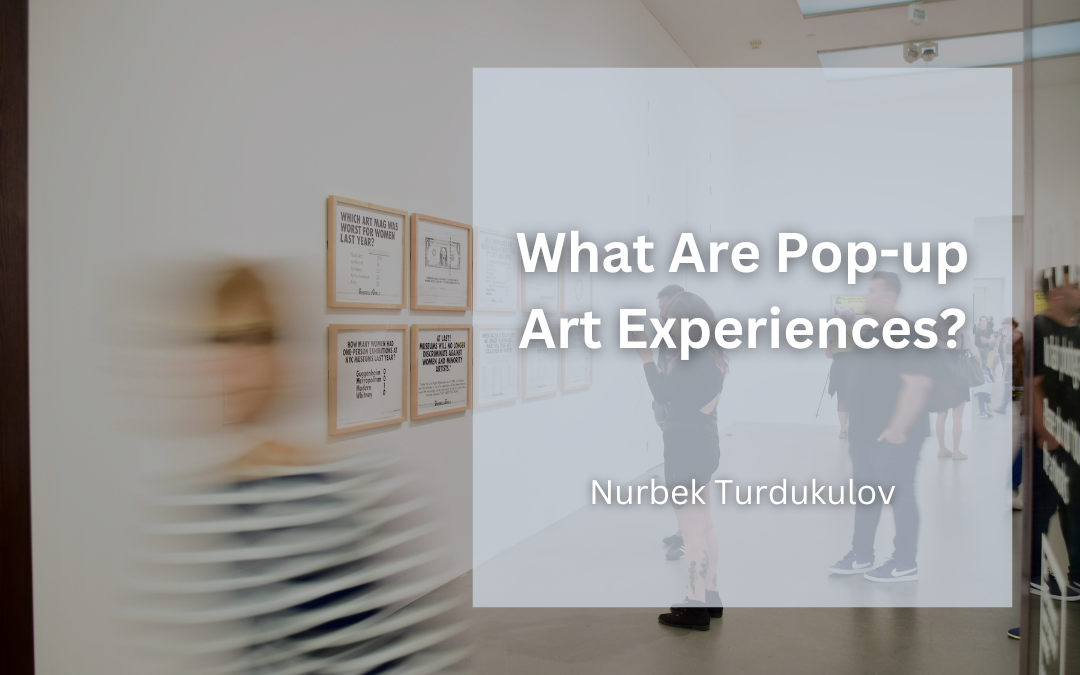Due to the increasing rents in major art cities such as New York and Los Angeles, pop-up exhibitions have become a solution to the problem of finding space in these areas. They can also be used to present new works of art. Besides providing a temporary solution to the leasing issue, pop-up exhibitions can also be used to create dynamic, performative works. This article will talk about the history of these exhibitions and how they’re helping to forge new opportunities in the art world.
The History of Pop-ups
The concept of pop-up exhibitions originated in New York City in 2007. In 2007, Gallery 151 was established to present a wall covered in rare graffiti art. The organizers were aware of the significance of this type of work, reportedly contributed by artists such as Basquiat and Fab 5 Freddy. The temporary gallery was then established to allow the public to view the wall.
According to Katy Diamond Hammer, a contemporary critic, the significance of the exhibition and the widespread acclaim it received allowed people to hope for more positive and sustainable development in New York City. The work represented a time in history when a reactionary movement was at once relevant and symbolic.
Pop-up exhibitions have since spread to other cities around the world. According to Lee Jolliffe and Hilary Du Cros, while they are not well-studied, they have become more prevalent in areas with high rents and limited options for showcasing emerging artists. Pop-up exhibitions are also commonly held in places with low rents.
A pop-up exhibition can be held in different locations. It can be held in a public place or an individual’s apartment. These exhibitions aim to create a short-term and non-traditional experience for the public.
The Place of Pop-ups in the Art World
An established commercial gallery can use a pop-up exhibition to undermine the market’s competitive nature. With various works on display, a pop-up can create an inviting atmosphere for the public. In addition to providing a temporary solution to the leasing issue, pop-up exhibitions can also be used to create dynamic, performative works.
A pop-up can also be used to gauge the potential of a particular artist or group. It can provide an opportunity for the public to see the work of a particular artist. A more institutional type of exhibition can also be used to promote an aspect of the work on display. This type of event can be used to generate new audiences. A fashion show that focuses on the clothes worn by 17th-century artists during classical portraits would be an ideal way to introduce the public to the works on display.
With a pop-up exhibition, curators, collectors, and artists have the opportunity to enter a space that is typically underused or branded in a way that could potentially preclude the kind of themes that a pop-up is designed to address. Pop-ups are a vital part of the art world’s ecosystem, as they allow critics, collectors, and emerging artists to get a glimpse of the work of other artists. While it’s not always possible to see works by prominent artists included in a pop-up show, they can still provide new insight into their work.
The Impact of Pop-up Exhibitions
A well-organized pop-up exhibition’s level of focus can help the works exhibited to be more focused on the minimal. Most of these exhibitions have a commercial intent. While the concept of a pop-up exhibition is often associated with “popping up,” it has a more commercial purpose.
For instance, art fairs can be considered pop-ups if they utilize the space previously designated for another purpose. In a statement, Casey Lesser, writing for Artsy, noted that the increasing number of pop-up exhibitions in new cities is a welcome alternative to the stressful experience of attending an art fair.
These exhibitions allow smaller galleries to expand their reach and enhance their visibility. They also offer them greater freedom and flexibility regarding their curatorial approach. In an era of art, fairs are more prevalent; the pop-up has become necessary. The process remains the same whether it’s a three-day event during an art dealer alliance or a two-week exhibition.
The increasing number of international galleries in local neighborhoods has been one of the main factors that have contributed to the rise of pop-up exhibitions. Due to the gentrification process, these mega-galleries can increase the rent on the surrounding properties. This can often cause smaller galleries to find it difficult to maintain their space. Pop-up exhibitions can help keep a gallery’s identity and mission intact.
How a Pop-up Can Benefit an Artist’s Career
Due to the increasing number of pop-up exhibitions, the concept of artist and curator collaboration has become more ideal. This allows artists to contextualize their brand. Pop-up exhibitions can also help reinvigorate the art world as a whole. However, they must balance the artist’s creative goals and the gallery’s needs.
Dealers often use pop-ups to assess an artist’s appeal. If a gallery has sufficient cultural capital, then an exhibition of this nature can do almost as well as a more conventional 4-week show. In a climate where pop-up exhibitions are becoming more common and particularly necessary, participating in these events can be beneficial for an artist’s career.

